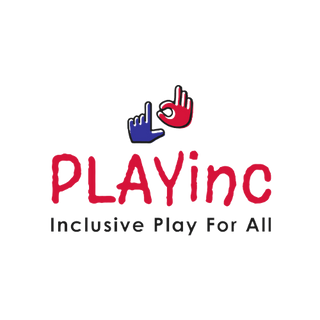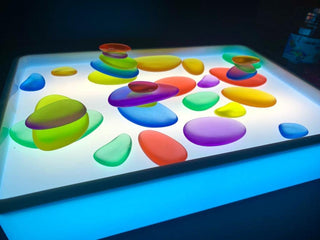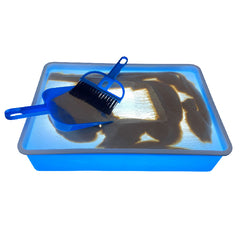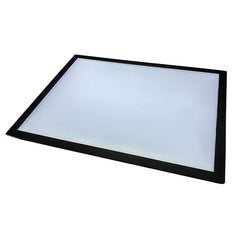In today's digital age, children are exposed to a wide array of educational and entertainment options. Among these, light boxes have gained popularity as versatile tools that engage children's senses and promote learning.
What Are Light Boxes?
Light boxes, also known as light boards, a sensory light up drawing board or illuminated boards, are flat, translucent surfaces that emit a soft, uniform light from beneath. They are typically made of acrylic or glass and are illuminated by LED lights. Light boxes come in various sizes, from compact, portable versions to larger table top models.
Versatile Uses of Light Boxes
Light boxes serve a multitude of purposes, making them a versatile tool for children's education and play:
Art and Creativity: Light boxes provide a radiant canvas for budding artists. Children can use them for tracing, drawing, and creating intricate designs with ease. The even illumination allows for precise detail work.
STEM Learning: Light boxes are excellent tools for introducing concepts in science, technology, engineering, and mathematics (STEM). They facilitate the exploration of geometric shapes, symmetry, and spatial relationships.
Sensory Exploration: The soft, warm glow of a light box engages a child's visual senses. This visual stimulation can be calming and soothing for some children, making it a valuable tool for sensory exploration and relaxation.
Language and Literacy: Light boxes are often seen as a light up letter board and can be used to promote language development by illuminating letters, words, and pictures. They can aid in letter recognition, phonics, and early reading skills.
Fine Motor Skills: Many light box activities involve manipulating small objects or tracing lines and shapes. These activities enhance fine motor skills, hand-eye coordination, and dexterity.
Problem-Solving: Light boxes often feature puzzles, mazes, and games that encourage children to think critically and solve problems. These activities promote cognitive development and analytical thinking.
What do children learn from Light Boxes?
1. Enhanced Visual Perception: The illuminated surface of a light box captivates children's attention and encourages them to explore patterns, colors, and shapes. This heightened visual engagement enhances their visual perception and discrimination skills.
2. Colour Recognition: Light boxes often feature colourful materials and objects. Children learn to differentiate and name various colours as they play and experiment with these vibrant elements.
3. Spatial Awareness: When children manipulate objects on the light box's surface, they develop a better understanding of spatial relationships and object placement. This skill is crucial for activities like puzzle-solving and shape manipulation.
4. Creativity and Artistic Expression: Light boxes offer a blank canvas for artistic expression. Children can experiment with different media, such as translucent paper, coloured gels, or markers, to create visually stunning artworks.
5. Mathematical Concepts: Light boxes can aid in teaching mathematical concepts such as symmetry, geometry, and basic arithmetic. Children can explore symmetry by folding and arranging objects on the light box.
6. Letter and Word Recognition: Light boxes with letter or word overlays help children recognize and learn the alphabet, sight words, and spelling. This is particularly valuable for early literacy development.
7. Fine Motor Development: Manipulating small objects, tracing lines, and creating intricate designs on a light box require fine motor skills. These activities strengthen hand muscles and improve hand-eye coordination.
8. Problem-Solving and Critical Thinking: Many light box activities involve puzzles and challenges that encourage children to think logically and find solutions. This fosters problem-solving and critical thinking skills.
9. Emotional and Social Skills: Light boxes can be used in group settings, encouraging children to share materials, collaborate on projects, and communicate their ideas. This promotes social interaction and emotional development.
Incorporating Light Boxes into Learning Environments
1. Early Childhood Education: Light boxes are valuable tools in preschools and early childhood education settings. They can be used to teach basic concepts like shapes, colors, and numbers in a hands-on and engaging way.
2. Special Education: Light boxes are especially beneficial for children with sensory processing disorders or autism. The soothing illumination can help regulate sensory input and create a calming environment.
3. Art Education: Light boxes are a staple in art classrooms. They facilitate drawing, tracing, and painting exercises, allowing students to experiment with light and shadow in their artwork.
4. STEM Programs: Light boxes are used to explore STEM concepts by highlighting symmetry, patterns, and geometry. They can be incorporated into science and math lessons to make abstract concepts more tangible.
Light boxes are not just tools for play; they are powerful educational aids that foster a wide range of skills in children. From enhancing visual perception to promoting creativity, problem-solving, and fine motor skills, the benefits of incorporating light boxes into learning environments are endless. As teachers and parents continue to seek innovative ways to engage and educate children, light boxes stand out as a shining example of how technology can support and enhance the learning journey.




